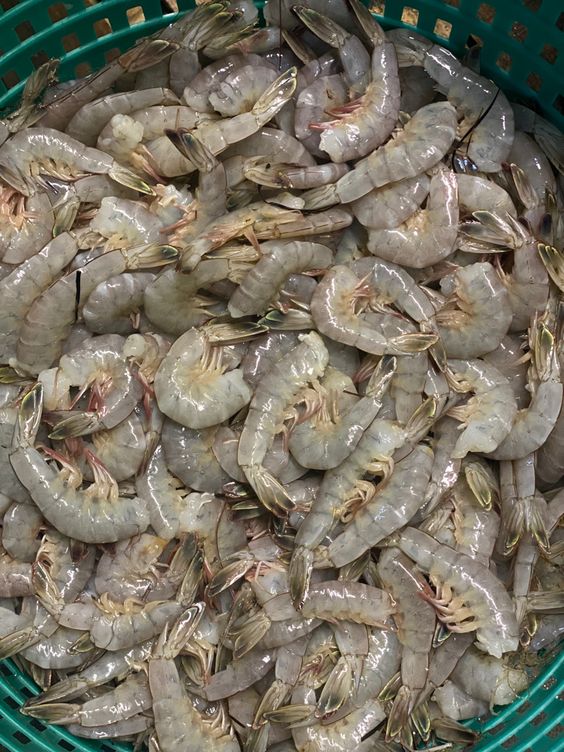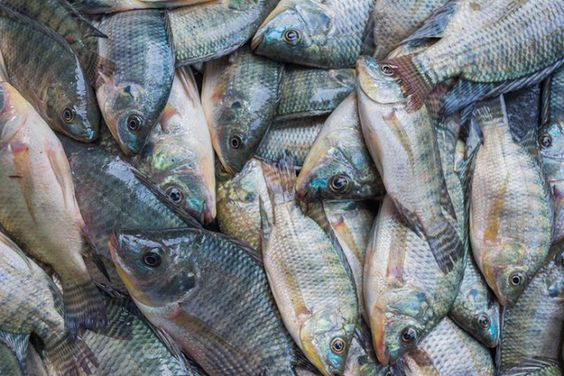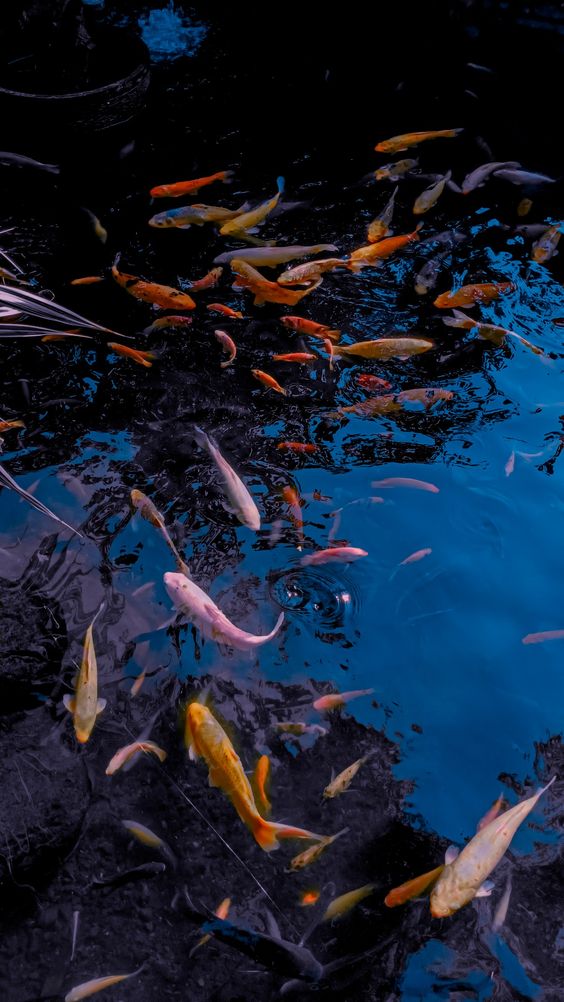Shrimp Farming Economics: Comprehensive Guide to Costs, Benefits, and Market Strategies
Shrimp Farming Economics, also known as shrimp aquaculture, has emerged as a significant sector within the global seafood industry, driven by increasing demand for shrimp in various culinary applications and its high economic value. As the industry expands, understanding the economics of shrimp farming becomes crucial for stakeholders, including farmers, investors, policymakers, and industry experts. This comprehensive guide delves into the multifaceted aspects of shrimp farming economics, exploring the benefits, goals, challenges, and strategies for optimizing economic performance in shrimp farming.
Contents
- 1 The Economic Landscape of Shrimp Farming
- 2 Benefits of Shrimp Farming Economics
- 3 Goals of Shrimp Farming Economics
- 4 Ideas for Improving Shrimp Farming Economics
- 5 Topic Suggestions for Further Exploration
- 6 Advantages of Shrimp Farming Economics
- 7 Challenges and Solutions
- 8 Financial Management in Shrimp Farming
- 9 Market Strategies and Distribution Channels
The Economic Landscape of Shrimp Farming
Shrimp farming has undergone remarkable transformation from traditional practices to sophisticated, technologically advanced operations. The economic landscape of this sector is shaped by a range of factors, from production costs and market demand to technological advancements and environmental considerations.
Production Costs
Production costs are a primary concern in shrimp farming economics, encompassing several critical components:
- Seed Stock Costs: High-quality shrimp larvae or post-larvae are essential for successful farming. The cost of acquiring these seed stocks can vary based on species, quality, and source, significantly impacting overall production expenses.
- Feed Costs: Feed represents one of the largest operational costs in shrimp farming. The formulation of balanced and nutritious feed is crucial for shrimp growth and health. The costs associated with high-quality feed can fluctuate based on ingredient prices and supply chain factors.
- Labor Costs: Labor is required for various activities, including feeding, monitoring water quality, and maintaining farm infrastructure. Skilled labor is necessary to ensure efficient operations, and labor costs can vary depending on regional wage rates and the level of expertise required.
- Infrastructure Costs: Investments in infrastructure, such as ponds, tanks, aeration systems, and water management systems, are significant. Infrastructure costs depend on the scale of the operation, technology used, and geographical location.
- Energy and Water Costs: Shrimp farming requires substantial energy for aeration, water pumping, and temperature control. Water management is also crucial for maintaining optimal conditions. Energy and water costs can be influenced by local rates and the efficiency of the systems in place.
Market Demand
The demand for shrimp drives the economic viability of shrimp farming. Several factors influence market demand:
- Consumer Preferences: Shrimp’s popularity in various cuisines and its perceived health benefits contribute to high consumer demand. Market trends and changing dietary preferences can impact shrimp consumption patterns.
- Export Markets: Many countries rely on shrimp exports to meet domestic and international demand. Export markets play a crucial role in determining the financial success of shrimp farming operations.
- Price Fluctuations: The market price of shrimp can fluctuate based on supply and demand dynamics, trade policies, and global economic conditions. Price stability or volatility impacts farmers’ revenue and profitability.
Technological Advancements
Technological innovations have significantly enhanced the economics of shrimp farming:
- Recirculating Aquaculture Systems (RAS): RAS technology enables efficient water use and reduces environmental impact. By recycling water within the system, RAS minimizes water consumption and waste, contributing to cost savings and sustainability.
- Automated Feeding Systems: Automated feeders improve feed efficiency by delivering precise amounts of feed at regular intervals. This technology reduces labor costs and minimizes feed waste, enhancing overall production efficiency.
- Health Management Technologies: Advances in health management, such as disease detection systems and monitoring technologies, help maintain shrimp health and reduce losses due to disease outbreaks.

Benefits of Shrimp Farming Economics
Understanding the economics of shrimp farming offers several benefits for stakeholders across the industry:
Profitability
Effective management of production costs, market prices, and operational efficiency can lead to significant profitability. By optimizing various aspects of shrimp farming, farmers and investors can achieve better financial returns and enhance the economic viability of their operations.
Economic Growth
Shrimp farming contributes to economic growth in regions where it is practiced. Coastal areas, in particular, benefit from job creation, increased economic activity, and improved livelihoods for local communities. The industry’s growth can stimulate related sectors, such as feed production and processing.
Sustainability
Economic viability often aligns with sustainability efforts. Sustainable practices, such as reducing resource use, minimizing environmental impact, and promoting responsible farming, contribute to the long-term economic stability of shrimp farming. Sustainable practices also help meet regulatory requirements and market expectations.
Goals of Shrimp Farming Economics
Several goals underpin the economic aspects of shrimp farming, aiming to improve profitability, sustainability, and industry development:
Maximizing Profit Margins
Farmers and investors strive to maximize profit margins by optimizing production practices, reducing costs, and enhancing shrimp quality. Achieving high profit margins requires careful management of expenses, efficient operations, and effective marketing strategies.
Ensuring Long-Term Sustainability
Long-term sustainability involves implementing practices that preserve environmental resources, reduce pollution, and maintain healthy shrimp populations. Sustainable shrimp farming practices contribute to the industry’s resilience and ability to adapt to changing conditions.
Enhancing Market Competitiveness
Improving market competitiveness requires staying ahead of industry trends, adopting new technologies, and meeting consumer demands effectively. Competitive advantage can be achieved through innovation, quality improvement, and strategic marketing.
Ideas for Improving Shrimp Farming Economics
Several strategies can enhance the economics of shrimp farming, focusing on efficiency, sustainability, and profitability:
Adopting Best Practices
Implementing best practices in pond management, feed formulation, and disease control can improve shrimp health and production efficiency. Best practices may include regular water quality testing, precise feed management, and timely disease treatment.
Investing in Technology
Investing in advanced technologies, such as automated systems and water treatment solutions, can enhance operational efficiency and reduce costs. Technological advancements can also lead to better resource management and improved shrimp quality.
Diversifying Products
Exploring value-added products, such as processed shrimp or shrimp-based by-products, can create additional revenue streams and enhance profitability. Diversification can also help mitigate risks associated with market fluctuations.
Enhancing Supply Chain Efficiency
Optimizing the supply chain, from production to distribution, can reduce costs and improve the overall economics of shrimp farming. Efficient logistics, streamlined processing, and effective distribution strategies contribute to cost savings and market competitiveness.
Topic Suggestions for Further Exploration
Several topics warrant further exploration within the realm of shrimp farming economics:
Impact of Global Trade Policies
Analyzing how international trade policies and tariffs affect shrimp farming economics and global market dynamics. Trade policies can influence export opportunities, market access, and pricing strategies.
Cost-Benefit Analysis of Sustainable Practices
Examining the financial implications of adopting sustainable practices and their impact on long-term profitability. A cost-benefit analysis can help determine the economic viability of sustainability initiatives and their benefits for the industry.
Innovations in Shrimp Farming Technology
Exploring emerging technologies and their potential to revolutionize shrimp farming practices and economics. Innovations in genetics, automation, and environmental control can drive industry advancements and improve economic performance.
Market Trends and Consumer Preferences
Studying current market trends and consumer preferences to align production strategies with market demands. Understanding market trends helps farmers and investors make informed decisions and adapt to changing consumer preferences.
Advantages of Shrimp Farming Economics
Several advantages highlight the significance of understanding and optimizing shrimp farming economics:
Increased Profitability
Efficient management of production costs and market strategies can lead to higher profitability and financial success. Profitability enables farmers to reinvest in their operations, expand production, and improve overall business performance.
Enhanced Sustainability
Economic viability supports sustainable practices, contributing to environmental conservation and long-term industry health. Sustainable practices help ensure the availability of resources and reduce the negative impact on ecosystems.
Economic Development
Shrimp farming drives economic development by creating jobs, supporting local communities, and generating export revenue. The industry’s growth fosters economic activity in coastal regions and contributes to regional development.
Market Resilience
A robust understanding of economics allows farmers to adapt to market fluctuations and maintain stability in their operations. Market resilience helps mitigate risks associated with price volatility, supply chain disruptions, and changing consumer preferences.

Challenges and Solutions
Despite its benefits, shrimp farming faces several challenges that impact its economics. Addressing these challenges requires effective solutions and proactive measures.
Disease Management
Diseases can have a significant impact on shrimp health and production. Implementing effective disease management practices, such as regular health monitoring, biosecurity measures, and vaccination, can help reduce disease outbreaks and minimize losses.
Environmental Impact
Shrimp Farming Economics can have environmental impacts, such as water pollution and habitat destruction. Adopting sustainable practices, such as improved waste management, water recycling, and habitat restoration, can mitigate environmental impacts and enhance sustainability.
Market Fluctuations
Shrimp Farming Economics,Price fluctuations and market volatility can affect profitability. Developing strategies to manage price risks, such as forward contracts or diversifying market channels, can help stabilize revenue and reduce the impact of market fluctuations.
Regulatory Compliance
Shrimp Farming Economics,Compliance with environmental regulations and industry standards is essential for long-term success. Staying informed about regulatory requirements and implementing practices that meet or exceed standards can help avoid penalties and ensure operational sustainability.
Financial Management in Shrimp Farming
Shrimp Farming Economics,Effective financial management is crucial for the success and sustainability of shrimp farming operations. It involves budgeting, cost control, financial analysis, and investment planning. Proper financial management ensures that resources are allocated efficiently, risks are managed, and profitability is maximized.
Budgeting and Forecasting
Shrimp Farming Economics,Budgeting and forecasting are essential components of financial management in shrimp farming. They help farmers plan for various expenses and anticipate future financial needs. Key aspects include:
- Cost Estimation: Estimating the costs associated with seed stock, feed, labor, infrastructure, and operational expenses is vital for creating a realistic budget.
- Revenue Forecasting: Predicting potential revenue based on market prices, production yields, and sales volumes helps farmers plan for profitability and manage cash flow.
- Contingency Planning: Setting aside funds for unexpected expenses or emergencies ensures that operations can continue smoothly even when unforeseen challenges arise.
Cost Control
Shrimp Farming Economics,Controlling costs is crucial for maintaining profitability in shrimp farming. Effective cost control measures include:
- Efficiency Improvement: Streamlining operations, reducing waste, and optimizing resource use help lower production costs and enhance efficiency.
- Supplier Management: Negotiating with suppliers for better prices on feed, seed stock, and other inputs can reduce expenses and improve cost-effectiveness.
- Energy Management: Implementing energy-saving technologies and practices, such as energy-efficient aeration systems and water pumps, can help reduce energy costs.
Financial Analysis
Shrimp Farming Economics,Regular financial analysis helps farmers assess their economic performance and make informed decisions. Key aspects include:
- Profitability Analysis: Analyzing profit margins, return on investment (ROI), and overall profitability helps evaluate the financial health of the operation.
- Cash Flow Management: Monitoring cash flow ensures that there is enough liquidity to cover operational expenses, invest in growth opportunities, and manage debt.
- Break-Even Analysis: Determining the break-even point, where total revenue equals total costs, helps assess the feasibility of the farming operation and identify pricing strategies.
Investment Planning
Shrimp Farming Economics,Investment planning involves making strategic decisions about allocating resources for growth and development. Key considerations include:
- Capital Investment: Evaluating the potential returns on investments in infrastructure, technology, and expansion projects helps prioritize capital expenditures.
- Risk Assessment: Assessing the risks associated with investments, such as market fluctuations, technological changes, and regulatory requirements, ensures that investments align with the overall business strategy.
- Financial Partnerships: Exploring opportunities for financial partnerships or funding sources, such as loans, grants, or venture capital, can provide additional resources for growth and innovation.
Market Strategies and Distribution Channels
Shrimp Farming Economics,Effective market strategies and distribution channels are essential for maximizing revenue and reaching target customers. Shrimp farmers need to develop and implement strategies to effectively market and distribute their products.
Market Research
Shrimp Farming Economics,Conducting market research helps farmers understand consumer preferences, market trends, and competitive dynamics. Key aspects include:
- Consumer Preferences: Identifying consumer preferences for shrimp varieties, product forms, and packaging helps tailor marketing strategies to meet market demands.
- Competitor Analysis: Analyzing competitors’ strengths, weaknesses, pricing strategies, and market positioning provides insights for developing competitive advantages.
- Market Trends: Staying informed about market trends, such as organic or sustainably farmed shrimp, helps farmers align their products with emerging consumer demands.
Marketing Strategies
Shrimp Farming Economics,Effective marketing strategies can enhance product visibility and attract customers. Key strategies include:
- Branding: Developing a strong brand identity and positioning can differentiate products and build consumer trust.
- Promotion: Utilizing promotional activities, such as advertising, social media, and trade shows, helps increase awareness and drive sales.
- Value Proposition: Highlighting unique selling points, such as high quality, sustainability, or traceability, can attract customers and justify premium pricing.
Distribution Channels
Shrimp Farming Economics,Selecting the right distribution channels ensures that products reach target markets efficiently. Key considerations include:
- Direct Sales: Selling directly to consumers through farm markets, online platforms, or farm-to-table programs can provide higher profit margins and build customer relationships.
- Wholesale: Partnering with wholesalers or distributors can expand market reach and streamline distribution processes.
- Export Markets: Exploring export opportunities to international markets can increase revenue and diversify sales channels.
Shrimp farming economics is a multifaceted field that encompasses production costs, market dynamics, and technological advancements. By understanding these economic factors, stakeholders can make informed decisions, optimize operations, and contribute to the industry’s growth and sustainability. As the global demand for shrimp continues to rise, the economic aspects of shrimp farming will play a crucial role in shaping the future of this vibrant industry.






